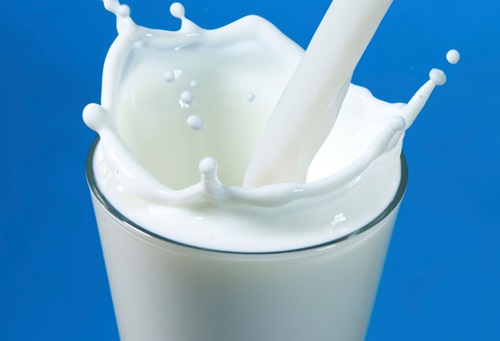1% Milk vs. Skim Milk

The fat content varies between skim and 1 percent, but most nutrients remain the same.
During processing, some or all of the fat that’s naturally found in milk can be removed and the amount that’s left determines whether it’s 1 percent or skim. Except for fat and calories, you'll get similar nutritional benefits no matter which you choose. In addition to the calcium you’d expect, both types of milk provide the same amount of protein, zinc and vitamin B-12.
Fat Profile
As its name states, 1-percent milk contains 1 percent of its weight in milk fat. Skim milk, which is also called fat-free or nonfat milk, has 0.5 gram or less of milk fat. One cup of 1-percent milk has 2.4 grams of total fat, compared with skim milk that has 0.2 gram. That means you'll get 21 calories in fat from a cup of 1-percent milk, but only 2 calories in fat from skim milk. One-percent milk has 1.5 grams of saturated fat, which is 12 times more than the amount in skim milk, and 12 milligrams or double the cholesterol.
Calories
The difference in calories is not so large that it will impact your daily caloric-intake goal. One cup of skim milk has 83 calories, while 1-percent milk has 102 calories. This difference is entirely due to the extra calories that come with the higher fat content in 1-percent milk.
Calcium
Both types have about the same amount of calcium. One-percent milk has 305 milligrams and skim milk has 299 milligrams of calcium in a 1-cup serving. Calcium from dairy products may help women trying to lose weight. Consuming a higher amount of calcium is associated with losing more weight if you’re on a diet, according to research published in the November 2010 issue of the “American Journal of Clinical Nutrition.” Another study in the January 2011 issue of the “British Journal of Nutrition” reported that women who were dieting felt less hungry when they supplemented their diet with milk.
Vitamin A
When fat is removed from milk, some of the vitamin A is lost. The Food and Drug administration mandates that low-fat milk must be fortified with vitamin A, so 1-percent and skim milk are enriched with at least 2,000 international units of vitamin A per quart of milk. With that amount added, they each contain about 20 percent of women’s recommended daily intake in a 1-cup serving.
Vitamin D
Milk naturally has very little vitamin D. One cup of unenriched skim milk doesn’t have any measurable vitamin D and 1-percent milk only has 2 international units. Milk does not have to be enriched with vitamin D, but at the same time, most producers voluntarily fortify their products with 100 international units per cup, according to the Office of Dietary Supplements. Women should include 600 international units of vitamin D in their daily diet. Getting the recommended intake is essential because your body needs vitamin D to absorb calcium and it helps regulate the immune system.
Source: woman.thenest.com/1-milk-vs-skim-milk-5440.html
